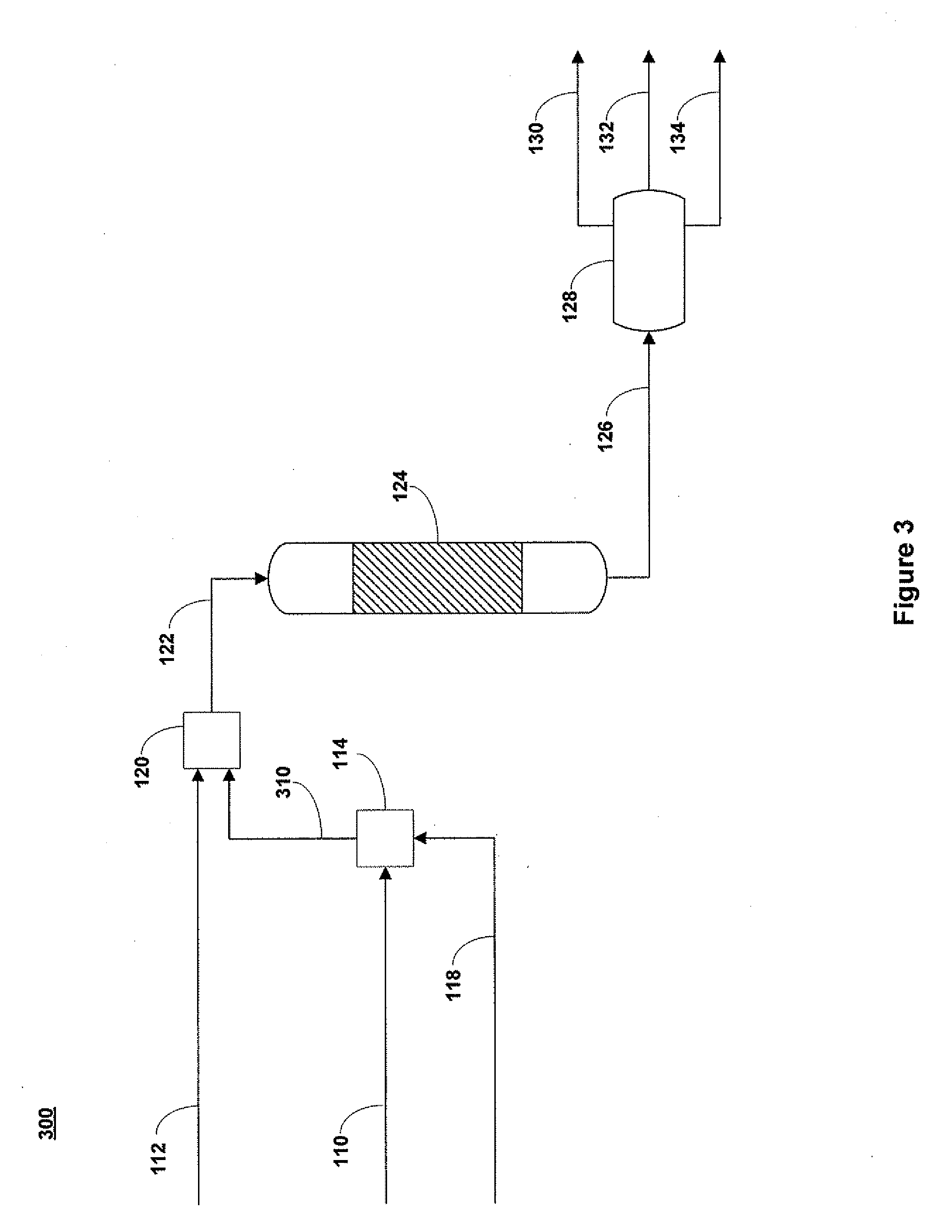Upgrading of Hydrocarbons by Hydrothermal Process
a hydrothermal process and hydrocarbon feedstock technology, applied in hydrocarbon oil treatment, thermal non-catalytic cracking, carbonaceous materials, etc., can solve the problems of process unit downtime, deactivation of catalyst, and limitations of conventional methods for petroleum upgrading
- Summary
- Abstract
- Description
- Claims
- Application Information
AI Technical Summary
Benefits of technology
Problems solved by technology
Method used
Image
Examples
example 1
[0058]Prior art upgrading with supercritical water. A whole range Arabian heavy crude oil and deionized water were pressurized by to a pressure of about 25 MPa. Volumetric flow rates of crude oil and deionized water at standard conditions were approximately 3.1 and 62 mL / minute, respectively. The crude oil stream was preheated in a first pre-heater to a temperature of about 150° C. and the deionized water stream was pre-heated to a temperature of about 450° C. The pre-heated crude oil and deionized water were combined by flowing though a tee fitting having an internal diameter of about 0.083 inches to form a combined stream having a temperature of about 379° C., which was above critical temperature of water. The combined stream was supplied to a vertically oriented main hydrothermal reactor having an internal volume of about 200 mL. Residence time in the main hydrothermal reactor was about 10 minutes. An upgraded hydrocarbon stream exiting the main hydrothermal reactor had a tempera...
example 2
[0059]A whole range Arabian heavy crude oil stream, a deionized water stream, and a hydrogen donating composition were each separately pressurized by metering pumps to a pressure of about 25 MPa. Volumetric flow rates of crude oil and deionized water at standard conditions were about 3.1 and 6.2 mL / minute, respectively. A bottoms stream from a hydrocracking unit having paraffinic hydrocarbons as the main component was supplied as the hydrogen donating composition and was supplied at a volumetric flow rate of about 0.05 ml / minute. The pressurized crude oil, deionized water, and hydrogen donating compositions were pre-heated in separate heaters, wherein the crude oil was pre-heated to a temperature of about 150° C., the deionized water was preheated to a temperature of about 450° C., and the hydrogen donating composition was pre-heated to a temperature of about 300° C. The crude oil stream and hydrogen donating composition were combined in a first simple tee fitting mixing device havi...
PUM
| Property | Measurement | Unit |
|---|---|---|
| temperature | aaaaa | aaaaa |
| pressure | aaaaa | aaaaa |
| temperature | aaaaa | aaaaa |
Abstract
Description
Claims
Application Information
 Login to View More
Login to View More - R&D
- Intellectual Property
- Life Sciences
- Materials
- Tech Scout
- Unparalleled Data Quality
- Higher Quality Content
- 60% Fewer Hallucinations
Browse by: Latest US Patents, China's latest patents, Technical Efficacy Thesaurus, Application Domain, Technology Topic, Popular Technical Reports.
© 2025 PatSnap. All rights reserved.Legal|Privacy policy|Modern Slavery Act Transparency Statement|Sitemap|About US| Contact US: help@patsnap.com



